ISL Online
Servicing the needs of your clients is key to running your well-oiled business, but what happens when your customer requires attention from the other end of the globe? Sure, you can communicate all day via email or telephone, but sometimes there’s only so much you can do without looking at the computer screen on the other end of the call.
That’s where remote access tools like ISL Online come in. The saving grace of every IT department, ISL allows technicians to tap into client workstations from thousands of miles away, making troubleshooting a whole lot easier on both ends.
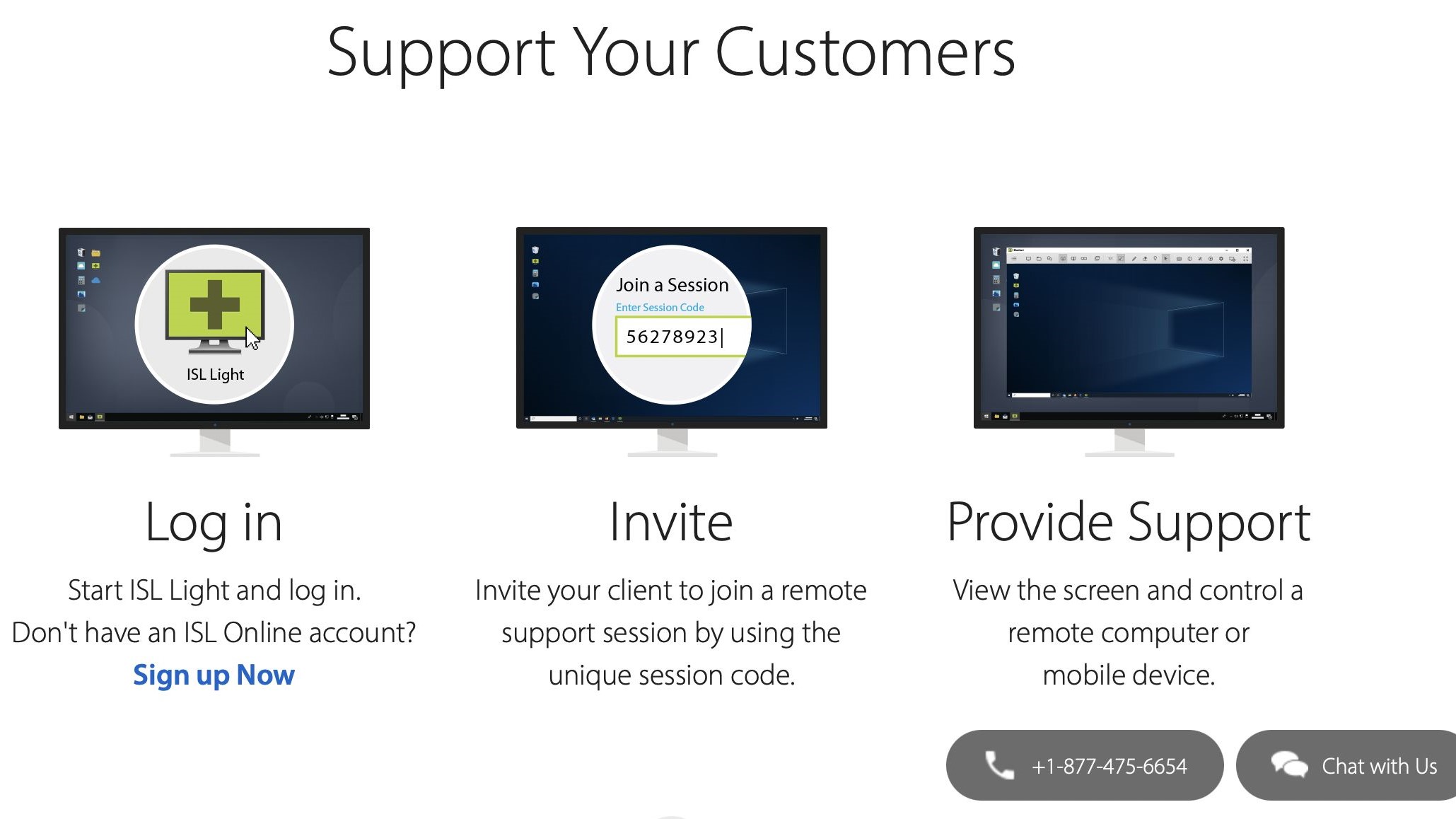
Features
An intuitive remote access software suite with numerous ways to connect and support clients, ISL Online offers a number of unique features to best serve the needs of your IT department and loyal customers. Basic tools include remote control, audio and video calls, file sharing, and messaging.
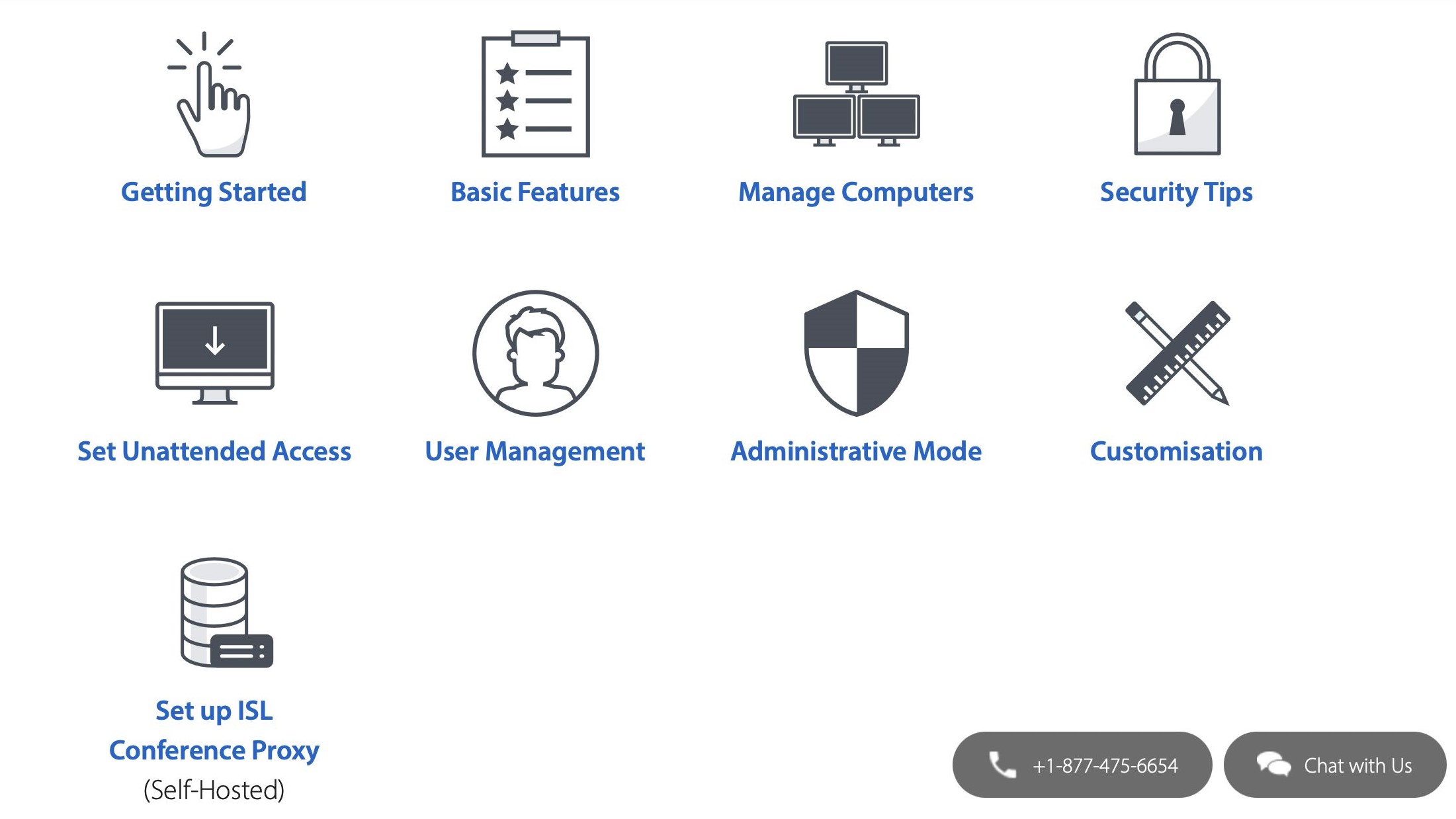
Once a remote session is active, technicians are presented with a toolbar with quick-click functions for things like screen sharing, requesting control of a client’s machine, an option for transferring the session to another tech, and a button for inviting extra participants to a session.
On the client end, customers are able to accept and deny remote logins (if unattended access isn’t granted). File transfer permissions and storage locations can also be managed on the client side – although a technician can decide where to send files, too.
Types of remote sessions
Technicians can initiate a remote session in numerous ways. The quickest and most efficient way to jumpstart remote access is by downloading ISL Light to both the technician and client machines. When fielding a request for remote support, techs can then launch the app and generate a session code that gets pinged to the client machine. After the client grants permission, the remote session can begin.
For unattended machines (client machines that techs are automatically granted permission to access), clients need to have the ISL AlwaysOn app (for Windows and Mac machines) installed on their end. Once installed, all the technician has to do is find the client computer in the list of available ISL Light devices and click to start a remote session.
“ISL Online” is not only the name of the company’s software suite but a remote access option for clients – with the “Online” aspect of the name referring to ISL’s remote site (islonline.net), where clients can enter session codes to enable remote access. While some users have complained of slower tools and extensions during a web session, it’s still a viable option for clients that choose to not have ISL Light installed on their machines.
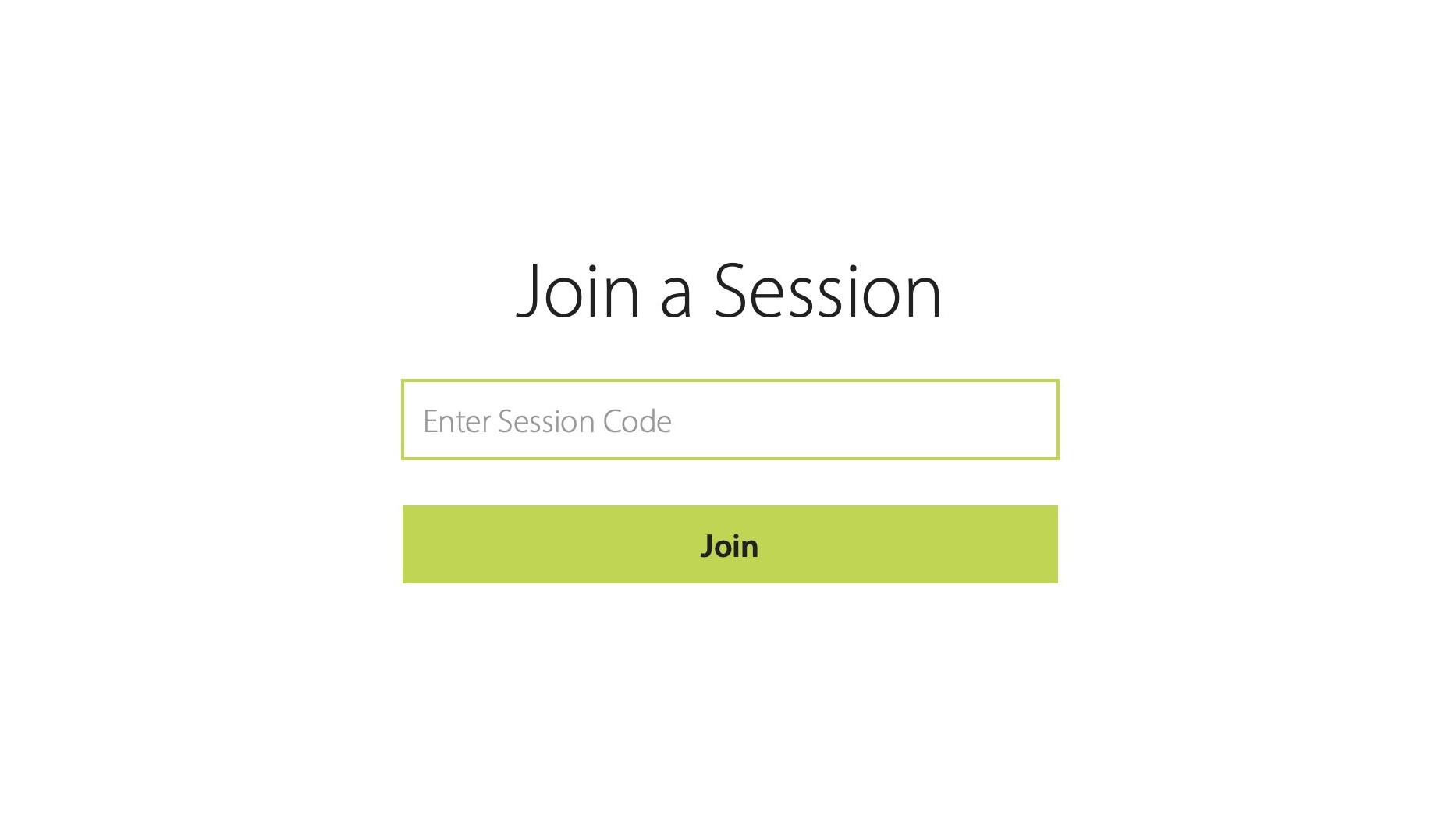
And not to mention that the web portal is extremely easy to use, with options for sorting AlwaysOn clients into custom groups and sharing permissions for other techs.
Remote access can also be initiated through an invite-only email with an attached session code that automatically downloads ISL Light on your client’s machine, as well as a live chat option that plants a chat button on your site that can be used to initiate a remote session.
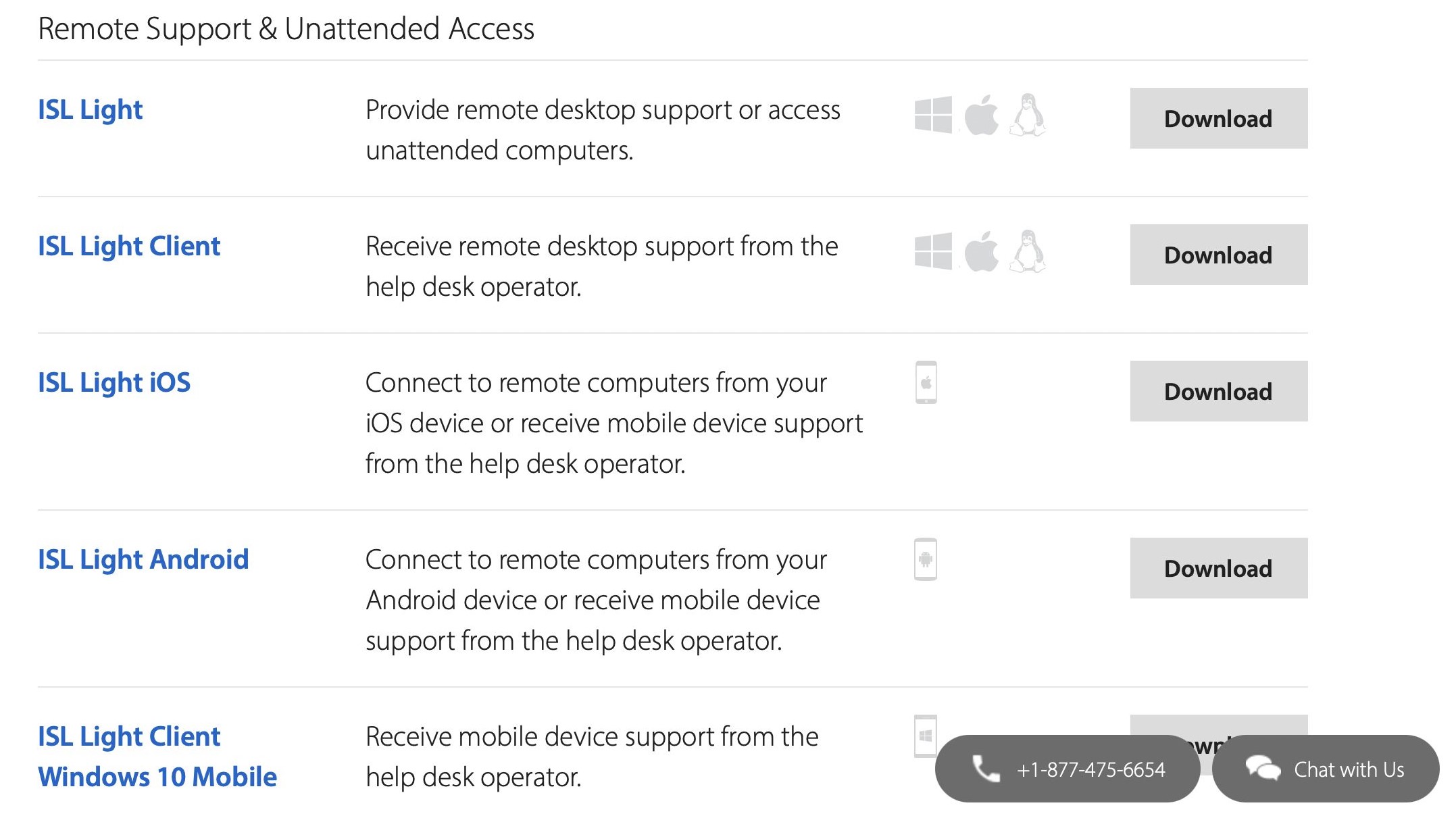
Platforms
ISL’s range of remote service tools are compatible with Windows, Mac, and Linux desktops, as well as iOS and Android devices. As mentioned, in order for a tech to access a client’s desktop or mobile device, all the client needs to do is install ISL Light on their own desktop or mobile device, or head over to islonline.net to start a browser session.
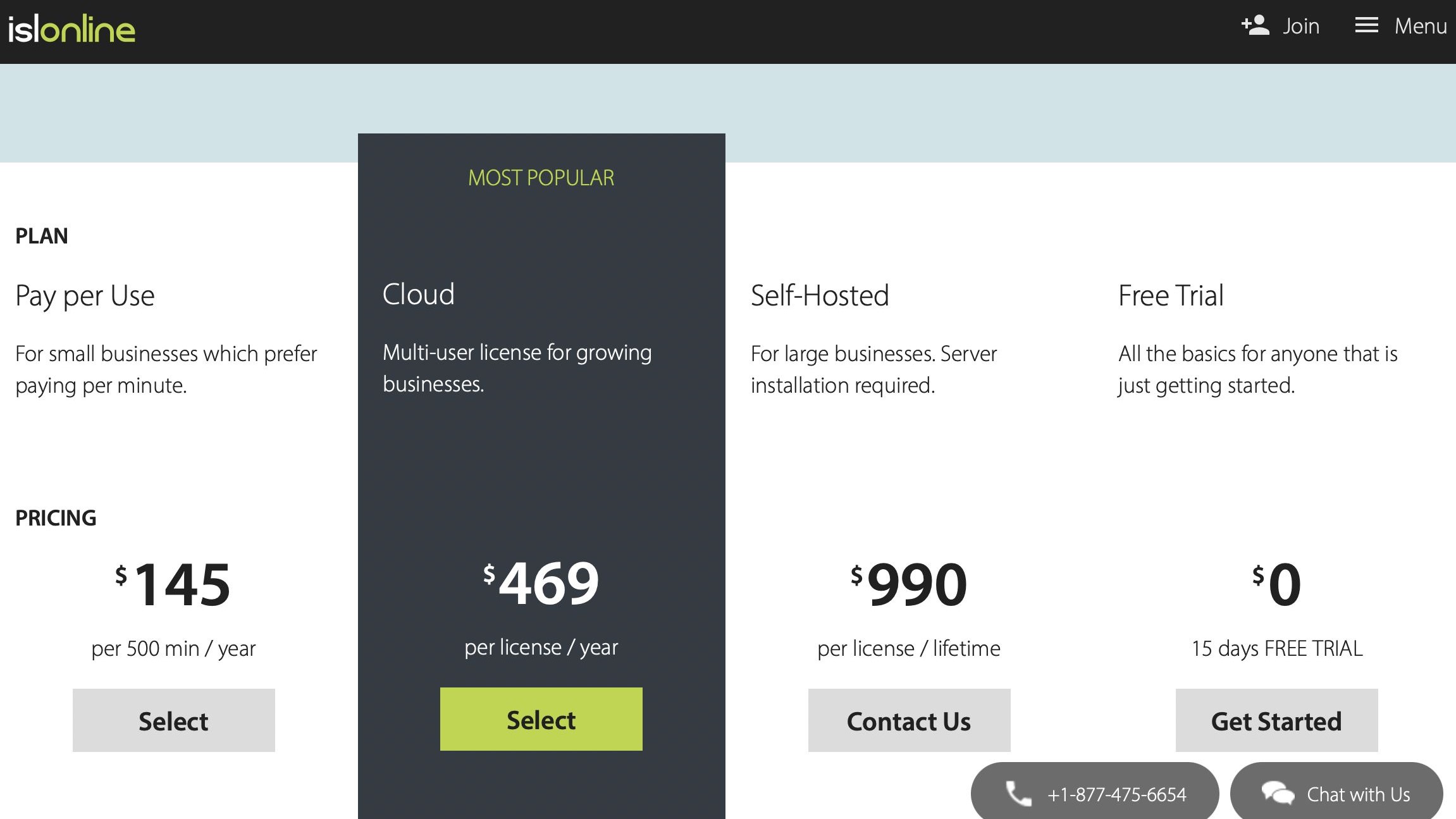
Plans and pricing
ISL Online offers several subscription options that are tailor-made to serve the remote access needs of your business and clients. If you’re new to the software and want to try it out, new subscribers are eligible for a 15-day free trial at zero cost.
At this tier, subscribers receive all the fundamental features of ISL Online, including remote desktop control, unattended access for client machines, mobile device support, app customization, and maximum security. In fact, the only add-ons not available to trial members are multi sessions and premium phone support.
If you decide that ISL Online is a good fit for your business needs, but your company’s footprint is rather small, you could opt for a Pay Per Use plan. For $145 per 500 minutes over a single year, the Pay Per Use plan rolls over all the standard features of ISL Online’s free plan, with multi session streams charged per minute.
Finding that your tech team frequently needs access to client desktops? A better subscription option might be the Cloud tier. For $469/year, your team unlocks a single license that can be rebranded to match your company’s credentials.
The caveat here is that if you want more than one technician handling multiple remote sessions at a time, you’ll need to pay for a license for each technician. At $139 per license, these additional license fees can rack up quickly.
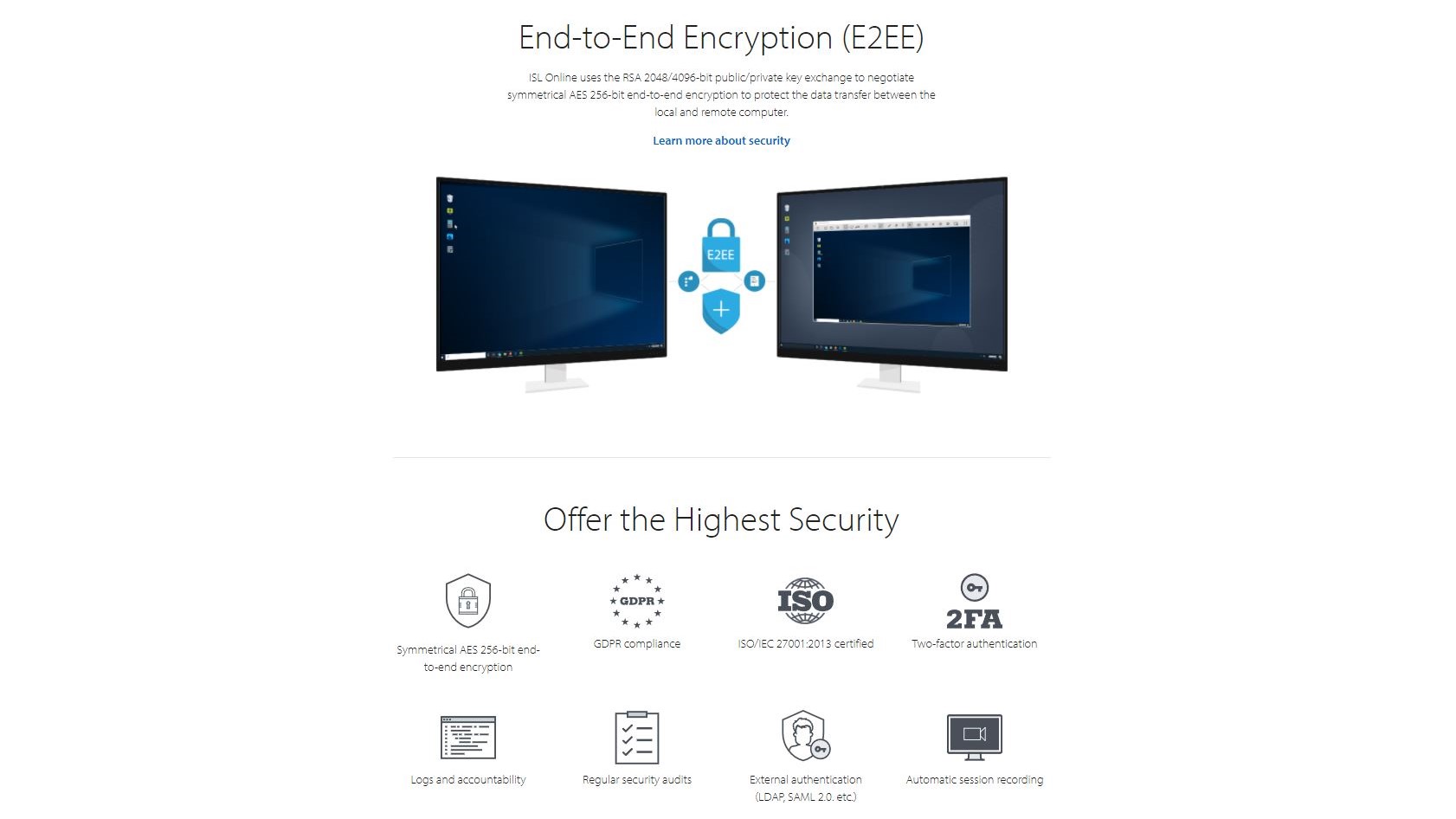
Privacy
ISL Online takes security seriously. For starters, all transferred data is treated to end-to-end AES 256 encryption, in addition to two-factor authentication (2FA), code signing, port filtering, user access management, and a whitelist/blacklist for what machines ISL Online techs are able to get into.
On top of several other top-notch security features, the client’s ISL AlwaysOn app is password-protected, with initial session access only available to the tech that started the call in the first place.
The competition
There are a number of remote desktop applications on the market.
RemotePC by iDrive allows access to up to ten Windows and Mac machines with prices starting at only $4/month and includes file sharing from machines and remote drives, and even includes live video support.
Zoho Assist is another worthy contender. Featuring some of the toughest security features on the market and options for remote printing and custom branding, there are numerous subscription options available for whatever your team may require, with prices starting at $8/month for the Zoho Standard plan.
Final verdict
ISL Online offers a number of powerful remote access tools, with multiple ways to support clients across a myriad of machines and platforms. On top of top-shelf security features and permissions tools for both techs and clients, it’s clear just how much ISL values user data across the board.
While some of the Cloud-licensing fees can be a bit hefty (especially for smaller businesses), this is more than made up for by the massive bounty of tools, extensions, and add-ons that come with an ISL subscription.
For those new to the suite, there’s also an excellent built-in support team to help both you and your clients successfully integrate with ISL Online.
We've also highlighted the best remote desktop software
0 comments:
Post a Comment